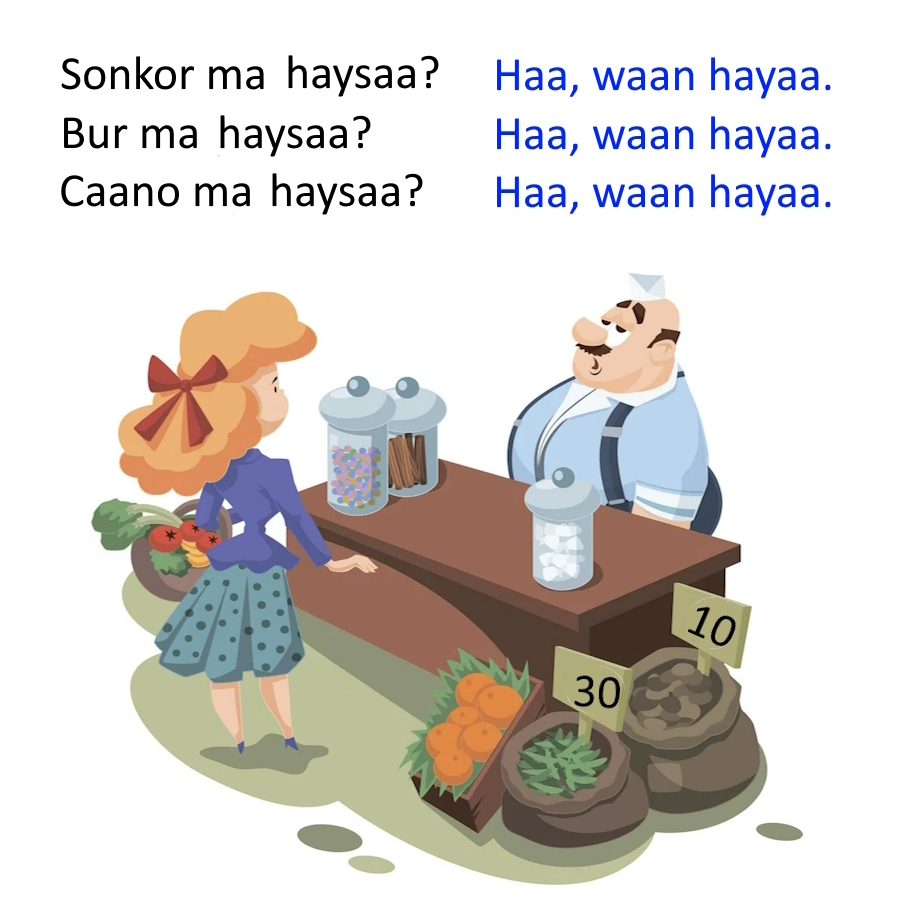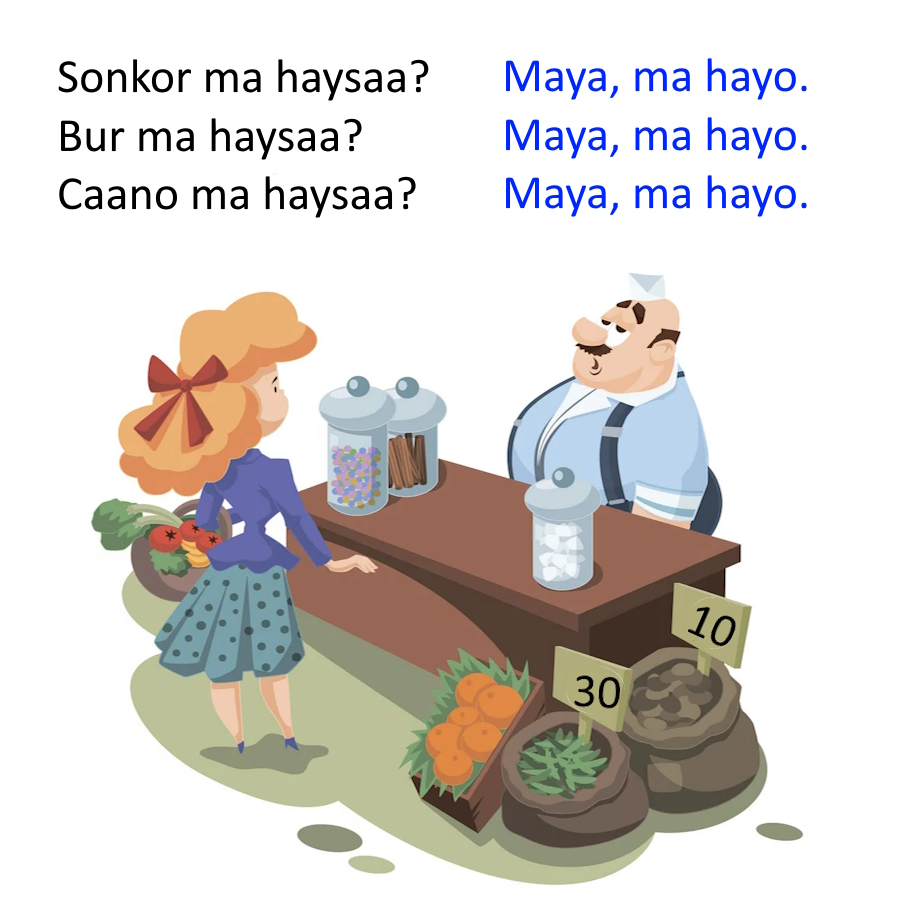 | Chapter 39 - The Verb HAYN |
|---|
General Information:
In this chapter, we study the conjugation of the verb Hayn. This verb means "to have" or "to possess".
It should not be confused with the verb Leeyahay which also means "to have".
What distinguishes them is that Hayn applies to tangible objects, things that can be touched or held in hand, for example: a book, a ball, a phone, a watch, a pen, etc., while Leeyahay applies to intangible things, for example, family, or even a car or a house, that cannot be held in hand.
This verb always has an object complement, which is why we use the series of pronouns waxaan, waxaad, wuxuu, etc., in the conjugation tables.
Affirmative Forms:
| HAYN - PRESENT GENERAL | ||
|---|---|---|
| Subject Pronoun | Verb | Translation |
| Waxaan | hayaa | I have |
| Waxaad | haysaa | You have |
| Wuxuu | hayaa | He has |
| Waxay | haysaa | She has |
| Waxaynu / Waxaannu | haynaa | We have |
| Waxaydiin | haysaan | You have (plural) |
| Waxay | hayaan | They have |
| HAYN - PAST GENERAL | ||
|---|---|---|
| Subject Pronoun | Verb | Translation |
| Waxaan | hayay | I had |
| Waxaad | haysay | You had |
| Wuxuu | hayay | He had |
| Waxay | haysay | She had |
| Waxaynu / Waxaannu | haynay | We had |
| Waxaydiin | hayseen | You had (plural) |
| Waxay | hayeen | They had |
| HAYN - FUTURE | ||
|---|---|---|
| Subject Pronoun | Verb | Translation |
| Waxaan | haysan doonaa | I will have |
| Waxaad | haysan doontaa | You will have |
| Wuxuu | haysan doonaa | He will have |
| Waxay | haysan doontaa | She will have |
| Waxaynu / Waxaannu | haysan doonnaa | We will have |
| Waxaydiin | haysan doontaan | You will have (plural) |
| Waxay | haysan doonaan | They will have |
| HAYN - IMPERATIVE | ||
|---|---|---|
| Singular | Plural | Translation |
| Hayso ! | Haya ! | Keep! / Keep (plural)! |
 |
 |
|---|
| Sonkor ma haysaa? = Do you have sugar? | Haa, waan hayaa = Yes, I have | Maya, ma hano = No, I don't have |
| Bur ma haysaa? = Do you have flour? | Haa, waan hayaa = Yes, I have | Maya, ma hano = No, I don't have |
| Caano ma haysaa? = Do you have milk? | Haa, waan hayaa = Yes, I have | Maya, ma hano = No, I don't have |
Negative Forms:
| HAYN - PRESENT GENERAL NEGATIVE | ||
|---|---|---|
| Subject Pronoun | Verb | Translation |
| Ma | hayo | I don't have |
| Ma | haysid | you don't have |
| Ma | hayo | he doesn't have |
| Ma | hayso | she doesn't have |
| Ma | hayno | we don't have |
| Ma | haysiin | you don't have |
| Ma | hayaan | they don't have |
| HAYN - PAST GENERAL NEGATIVE | ||
|---|---|---|
| Subject Pronoun | Verb | Translation |
| Ma | haynin | I didn't have |
| Ma | haynin | you didn't have |
| Ma | haynin | he didn't have |
| Ma | haynin | she didn't have |
| Ma | haynin | we didn't have |
| Ma | haynin | you didn't have |
| Ma | haynin | they didn't have |
| HAYN - FUTURE NEGATIVE | ||
|---|---|---|
| Pronoun Subject | Verb | Translation |
| Ma | hayn doono | I won't have |
| Ma | hayn doontid | you won't have |
| Ma | hayn doono | he won't have |
| Ma | hayn doonto | she won't have |
| Ma | hayn doonno | we won't have |
| Ma | hayn doontiin | you won't have |
| Ma | hayn doonaan | they won't have |
| HAYN - IMPERATIVE NEGATIVE | ||
|---|---|---|
| Singular | Plural | Translation |
| Ha hayn! | Ha haynina! | don't keep! / don't keep! (plural) |
| Previous Chapter | Next Chapter | Table of Contents |
|---|